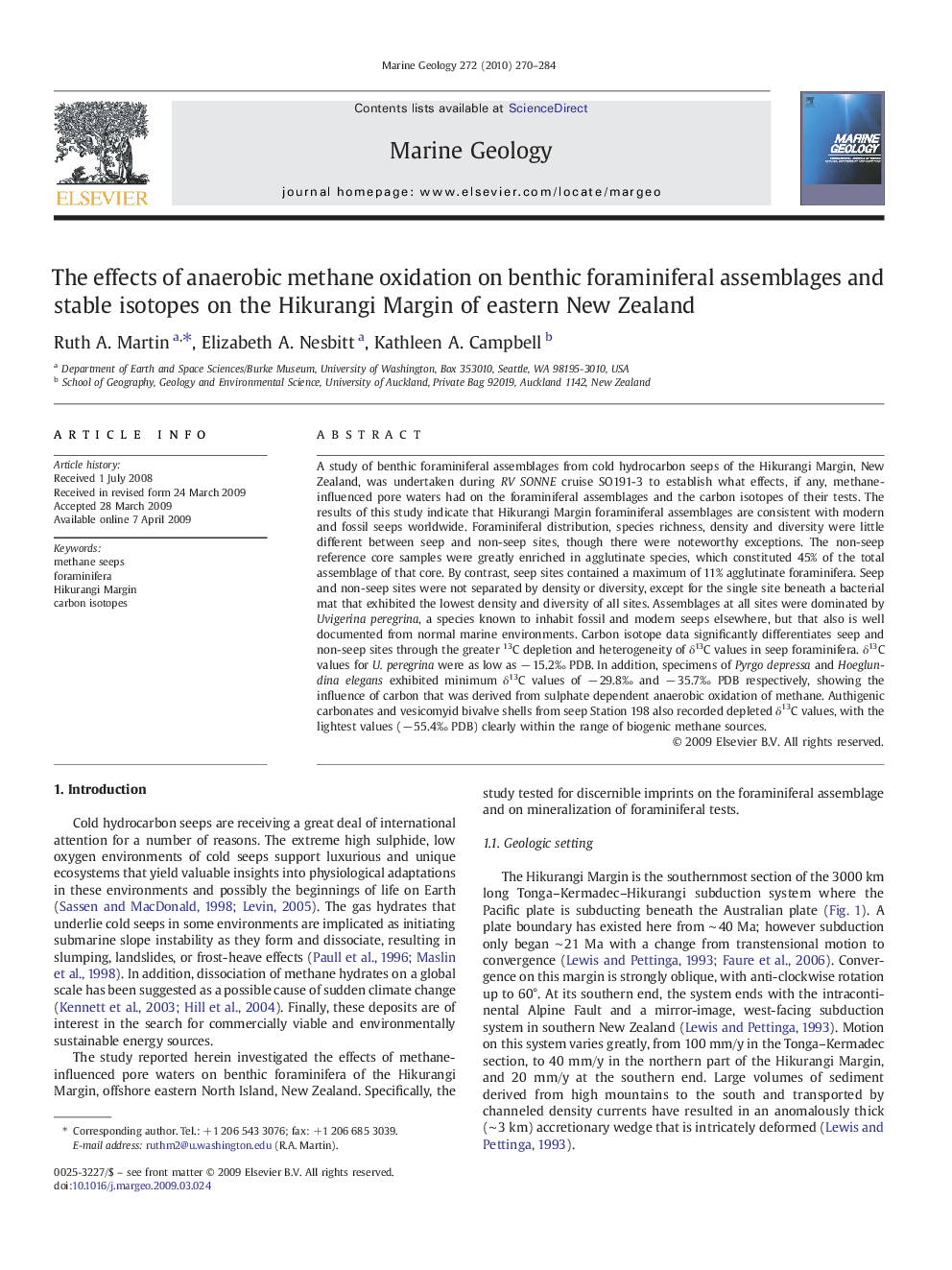| کد مقاله | کد نشریه | سال انتشار | مقاله انگلیسی | نسخه تمام متن |
|---|---|---|---|---|
| 4718815 | 1639149 | 2010 | 15 صفحه PDF | دانلود رایگان |

A study of benthic foraminiferal assemblages from cold hydrocarbon seeps of the Hikurangi Margin, New Zealand, was undertaken during RV SONNE cruise SO191-3 to establish what effects, if any, methane-influenced pore waters had on the foraminiferal assemblages and the carbon isotopes of their tests. The results of this study indicate that Hikurangi Margin foraminiferal assemblages are consistent with modern and fossil seeps worldwide. Foraminiferal distribution, species richness, density and diversity were little different between seep and non-seep sites, though there were noteworthy exceptions. The non-seep reference core samples were greatly enriched in agglutinate species, which constituted 45% of the total assemblage of that core. By contrast, seep sites contained a maximum of 11% agglutinate foraminifera. Seep and non-seep sites were not separated by density or diversity, except for the single site beneath a bacterial mat that exhibited the lowest density and diversity of all sites. Assemblages at all sites were dominated by Uvigerina peregrina, a species known to inhabit fossil and modern seeps elsewhere, but that also is well documented from normal marine environments. Carbon isotope data significantly differentiates seep and non-seep sites through the greater 13C depletion and heterogeneity of δ13C values in seep foraminifera. δ13C values for U. peregrina were as low as − 15.2‰ PDB. In addition, specimens of Pyrgo depressa and Hoeglundina elegans exhibited minimum δ13C values of − 29.8‰ and − 35.7‰ PDB respectively, showing the influence of carbon that was derived from sulphate dependent anaerobic oxidation of methane. Authigenic carbonates and vesicomyid bivalve shells from seep Station 198 also recorded depleted δ13C values, with the lightest values (− 55.4‰ PDB) clearly within the range of biogenic methane sources.
Journal: Marine Geology - Volume 272, Issues 1–4, 15 July 2010, Pages 270–284